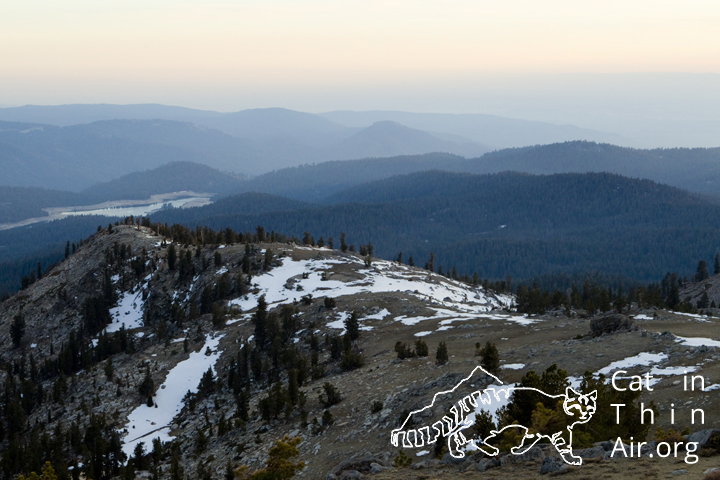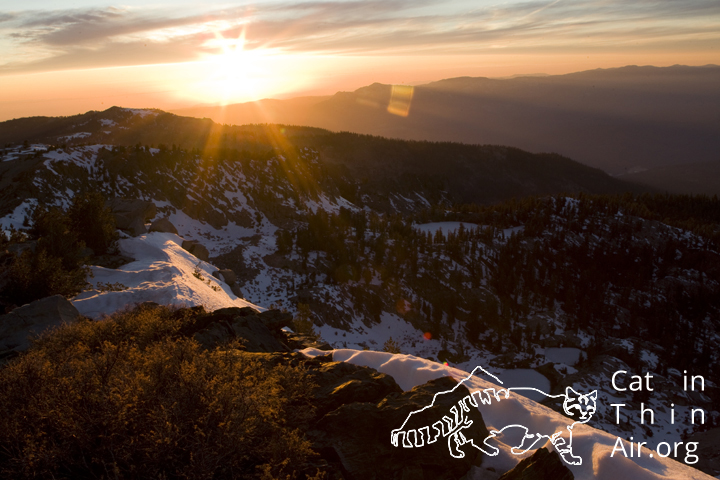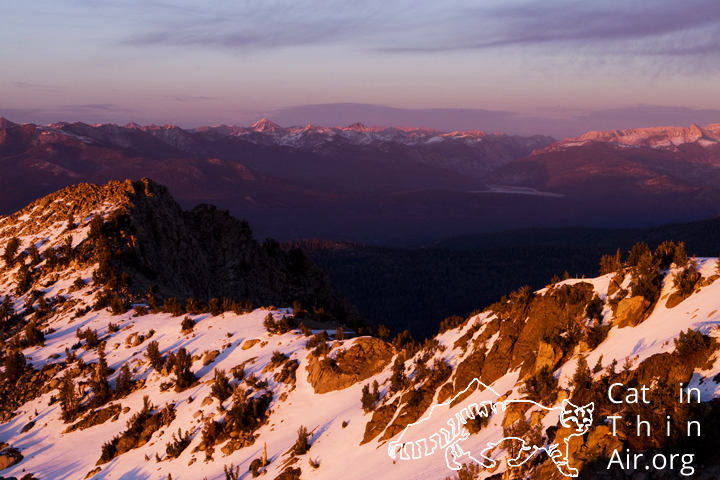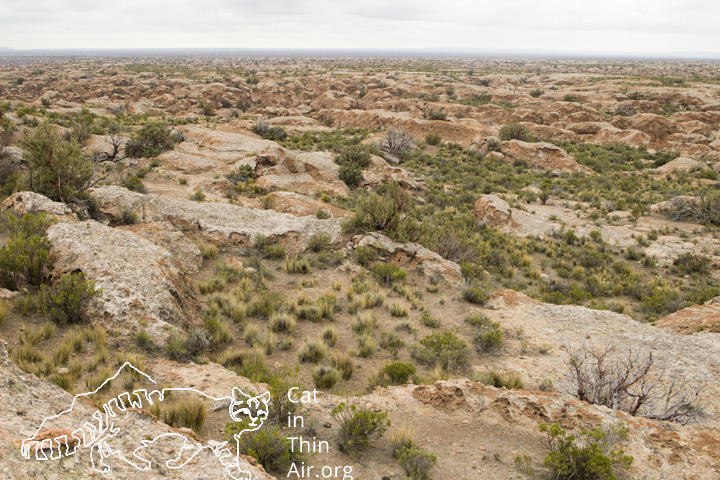
The Altiplano, or high altitude plateau, is a special place. Stretching from northern Argentina to central Peru, it is the second highest plain in the world (after Tibet), with an average of over 12,000 feet. La Paz, the captial city of Bolivia which I introduced in the last blog post, lies within the Altiplano, but to find the cats we needed to head out of the city and to higher elevations. We made our way southwest towards where Bolivia borders Chile and Peru. Our final destination was Ciudad de Piedra (stone city) at the ‘comfortable’ altitude of 4000 meters or slightly more than 13,000 feet.
The Altiplano is a region, not a habitat, so when you travel through it you encounter different plant communities and types of rock formations. At first came the gently rolling Puna grasslands as we slowly climbed in altitude.

Though beautiful, we had to move on as the Andean Cats are not primarily found in these grass communities. The soil became harder and the grasses less frequent.
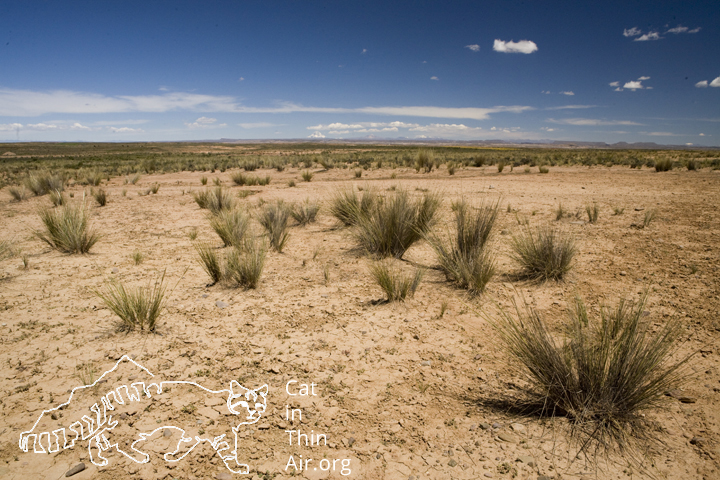
Still, we moved on. We then took a turn off the main dirt road to slowly crawl up this beautiful river valley. We were now in Andean Cat habitat. The cat prefers steep rocky areas in which its favorite prey, the Southern Viscacha (Lagidium viscacia) — future blog post to come — lives. After settling into camp life, we took a stroll up along the river. With every step, the beauty of the place became more apparent.

In the afternoon, we decided to scale one of the cliffs to get a better vantage point. Reaching the top was difficult work as every step is challenging, oxygen is sparse at this altitude (aka the air is thin!). Once we did though, we were once again reminded why its called a plain. This labyrinth of rocks was lying in front of us, seemingly creating this endless plateau. It was a sight to behold.

The reality of course is that this plain is continuously dissected by different sized canyons and making one’s way through them is no easy task, especially when the entrance and exit to the canyons are hard to find. The views in them though, are especially stunning.
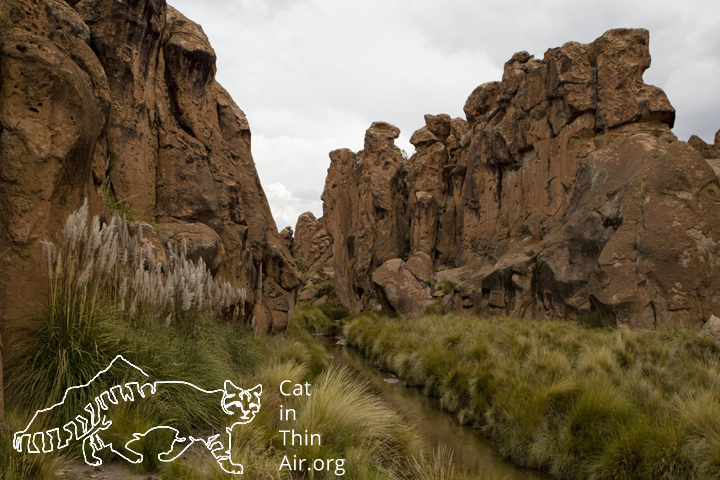
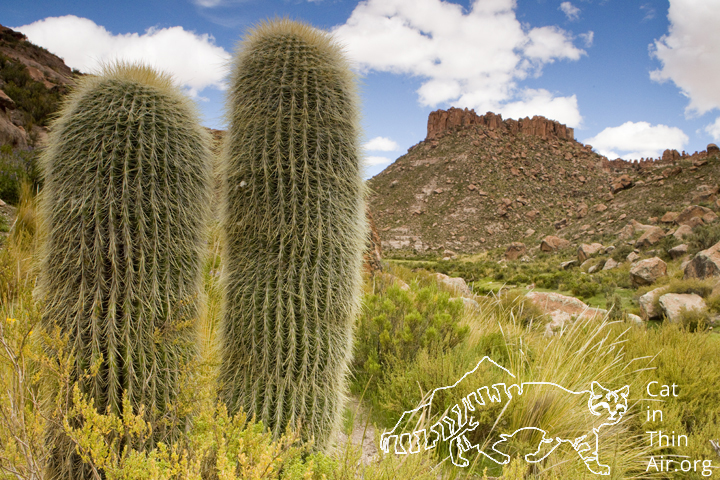
This is no easy place to live, and in some way the Andean Cat has probably been able to hold on because not many people choose to settle in this harsh environment. I felt incredibly privileged to share its space, even with all its challenges.

